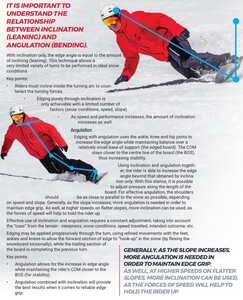Japanese style carving
Master cherry I would like to carve like this Japanese carver named Kento. I notice asian carvers have a different style of carving, they can go really low on both edges, almost touching the snow with their whole body but I can’t out my finger on how they are able to do so. Kento seems to achieve high edge angle by extending the front leg on heel turns but I could be wrong. Would you be able to please take a look and provide some insight on his technique? Link:
thanks!!
I don’t know the intricacies of Korean & Japanese techniques, but they don’t seem to move their hips forward as much. The back knee always seems to be bent, transitioning over the tail, and then using their chest to get their centre of mass forward.
Here’s a series that might be helpful:
Big White, BC, Canada
@holkn I think our styles are almost identical! I thought tjis was video of me until I noticed the red pants. I don't have red pants...
Joking. This video is an excellent example of a very talented Asian style rider. Of course, I'm not doing any of those reverts and jumps so I looked most closely at the video section staring at 1:20 where there's a few linked turns of pure directional carving.
The biggest difference that jumps out to me is the timing of the compression and extension. (This movement has two components; the knees and the bowing of the upper body over the nose of the board. ) Look at his transitions: he'll suck up the knees into his body and quickly flip the board to the other edge. So at the moment of edge transition, when he's unweighting, his knees are bent at their maximum, we call this "down unweighting" (even though he may be jumping). Then, in the apex of his turn, he's fully extended through the legs.
In my turns (not always and exclusively, but generally), my legs are straight (maximum extension) at the transition ("up-unweighting") and then bent at the apex. It's kind of opposite. Classic Euro-carving is a down-unweighted turn, pencil line carves are up-unweighted turns.
There are many other smaller differences too. For example, Kento's movements are much more exaggerated than my own. He throws his weight forward on initiation and way back just before the transition. I do this too, but far less. He also compresses more (through the knees and the bowing) whereas I tend to minimize my movements to only what's required for a smooth turn.
Another difference is the board. His is narrower and way softer with a smaller sidecut radius. made specifically for this style of riding with the jumps and reverts and quick edge changes. Mine are bigger and a lot stiffer, made to hold an edge at higher speeds and carve wider radius, faster turns. Look at how his board chatters through almost every turn. If my board does that I consider it a mistake, a bad turn. I also close my turns more, achieving 180 degrees on almost all of them while Kento is making quicker, smaller radius turns, transitioning after only 170 degrees or less. His board is designed for this.
Kento also plays with the counter rotation in the upper body, this is characteristic of the Asian style. The rumour is that this was borne out of an historical accident in that the previous generation of Japanese carvers were taught by North American racers, and these old school riders influenced the current generation and their style. But those racers were teaching up-unweighted turns for sure, style has progressed a lot in 25 years.
I presume you asked @holkn because you want to emulate his style and you're wondering what to change from my instructional videos? Do everything pretty much the same except the transitions. Suck up your knees as you change edges and then push through the apex of each turn. This kind of turn is also better suited to production carving boards than pencil line carves though both are possible on production boards (to a limited extent). The down un-weighting will slow you down a lot and, with practice, leave you lying on the snow through your turns which is, I expect, where you want to be. For me carving is more about creating high g-forces and leaving the perfect track, but Kento has excellent style and I can absolutely see why you might want to ride like him.
Good luck, send video!
(You see now why I didn't want to write all this in the YouTube comment section? Thanks for posting here.)
I'm just slaying...
Wow thanks for the very detailed analysis!! Appreciate you taking the time to respond to my post! Yes now that you have mentioned it it does look like he’s doing down unweighted turns. I have been doing up-unweighted for years, I assume for down-unweighted you “stand up” on your board through the apex of the turn?
Posted by: @holknI assume for down-unweighted you “stand up” on your board through the apex of the turn?
Not so much "stand up" as "push out" through the apex. Give it a try!
I'm just slaying...
I guess it is a bit like the push-pull technique:
https://www.extremecarving.com/tech/excarving.html
But rather than relying on inclination, the Asian style uses angulation.
Big White, BC, Canada
Posted by: @board-doctorBut rather than relying on inclination, the Asian style uses angulation.
For the uninitiated, I think he means inclination of the body towards the snow versus angulation of the board away from flat on the snow.
The Asians seem to be in much smaller sidecuts than the extreme carvers.
This is a great example of Russian Extreme Carving, @bfreeap (on YouTube) is a friend of mine. His sidecuts are in the range of 20m. The down unweighting is much more subtle but it's there. So is the inclination. He is so fast. We tried to get video together but I'm making twice as many turns as him and I can't keep up. (I was riding a 171 15m sidecut that day (Park City last month), he rode a 185 20m.)
I'm just slaying...
The Asians simply have a smooth style.
I've been following them for a few years now.
And also all the posi/posi.
Anyone who takes a snowboard course here in Europe or wants to become a snowboard instructor. Or even study. The Duckstance attitude is a prerequisite. When I read that, I rejected it again. I had the idea of becoming a snowboard instructor in my spare time. I learned to snowboard with hard boots and posi/posi. Unfortunately I can't remember which angles they were. That was in 1992. I've never ridden in Duckstance, for whatever reason.
If you do a snowboard course in Asia in particular, South Korea, Japan, I think also China, you learn in posi/posi.
They also do competitions, something like the banked slalom, only as a carving variant. Who is better at carving style.
Why are there so many different approaches? The western style is so contaminated with park and big air, it's never been my taste. Showing tricks you've practiced on a few square meters.
That has alienated the meaning of snowboarding.
Snowboarding is all about. You, the board, the mountain. In the end, a unity is created and this results in flow. That's my philosophy.
I have included my playlist here.
Quite an interesting rider, follow his progress on the channel.
A Japanese snowboard instructor who also shows dry training.
Quite a nice channel showing a wide variety of riders.
https://www.youtube.com/@ToyFilms
Posted by: @wild-cherryI think he means inclination of the body towards the snow versus angulation of the board away from flat on the snow.
People do tend to use these terms differently. Here's a clip from the CASI manual (I think this nomenclature is becoming more common place):
With inclination, the body is straight and the edge angle is simply equal to the amount of leaning.
Angulation uses the ankle, knee & hip to increase edge angle, while stacking your weight closer to the edge. The 'tray drill' acheives this, allowing much greater edge angles. (It seems like some people do conflate edge angle & body bending together as 'angulation').
Carving is generally pretty limited without angulation. Having said that, some of those Extreme Carvers are on such steep slopes that they can lay it out and essentially still be stacked over their edge. But even on more modest slopes, the G force they generate allows it. Watching people try this at modest speed on more modest slopes just looks ridiculous as they drag their arms and chatter all over the place.
Big White, BC, Canada
- 21 Forums
- 227 Topics
- 2,206 Posts
- 1 Online
- 511 Members


